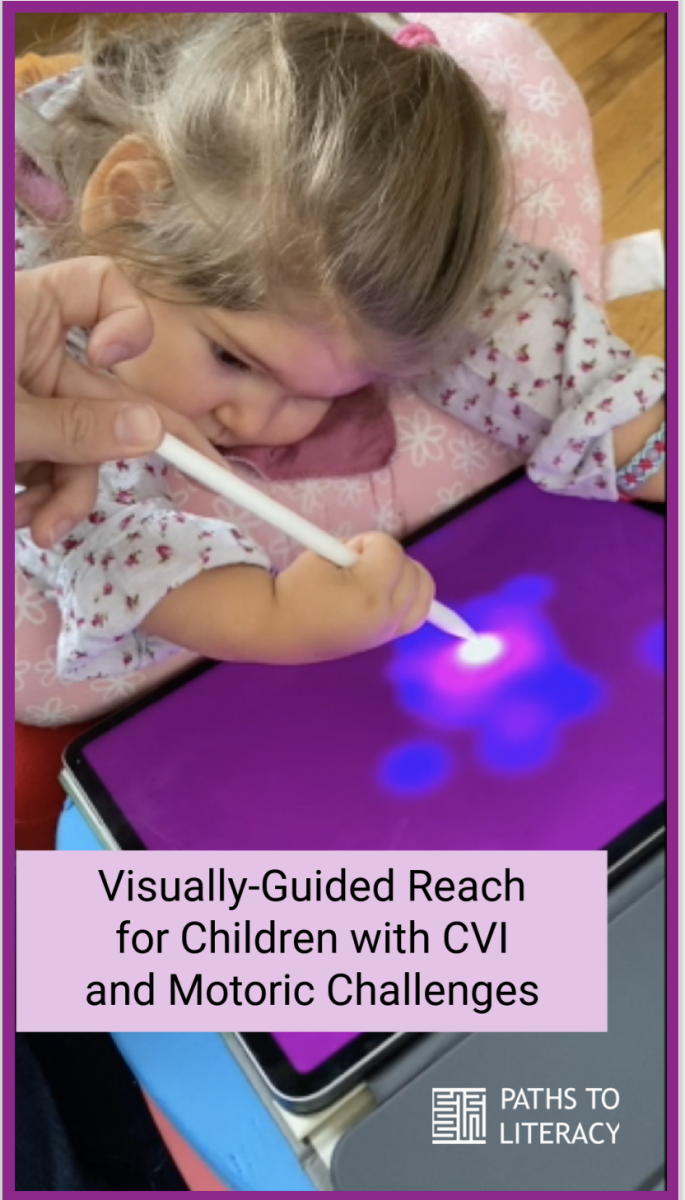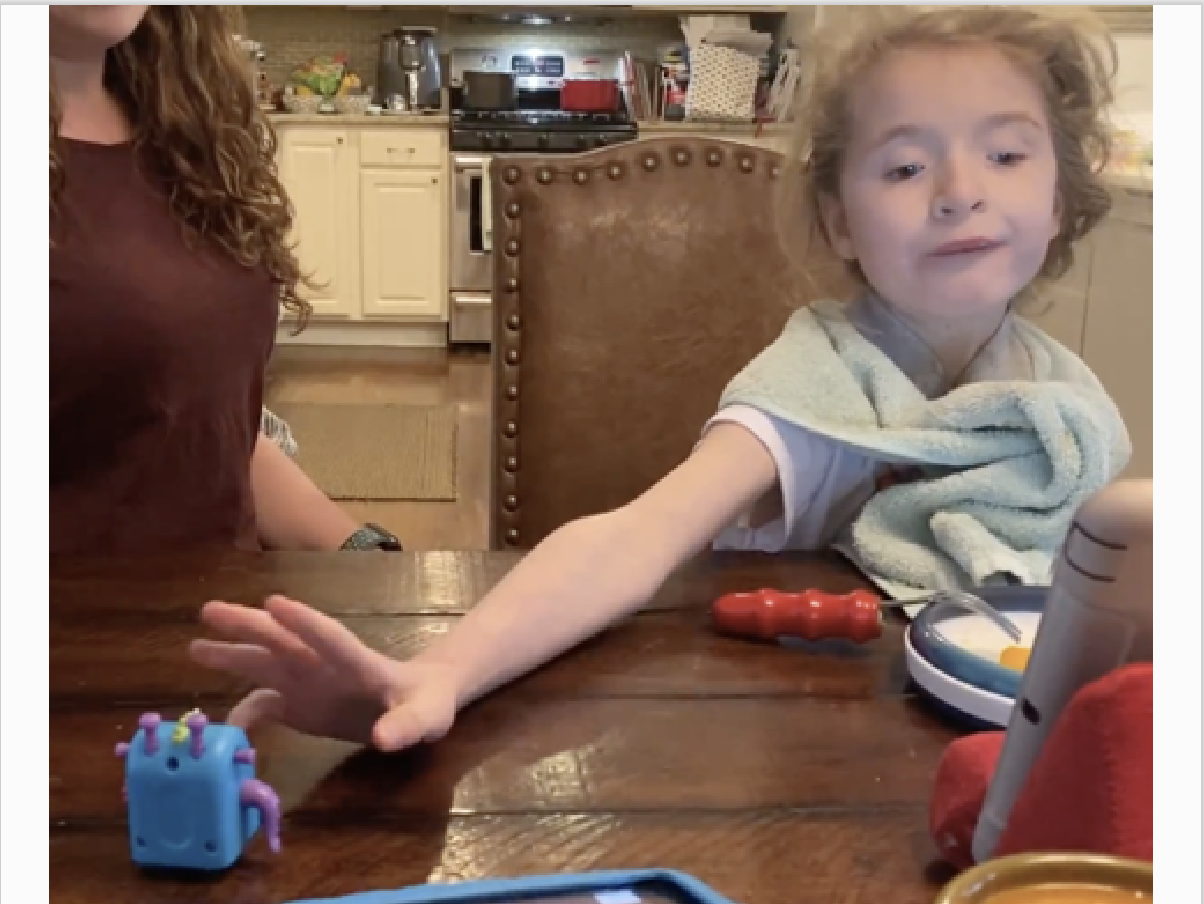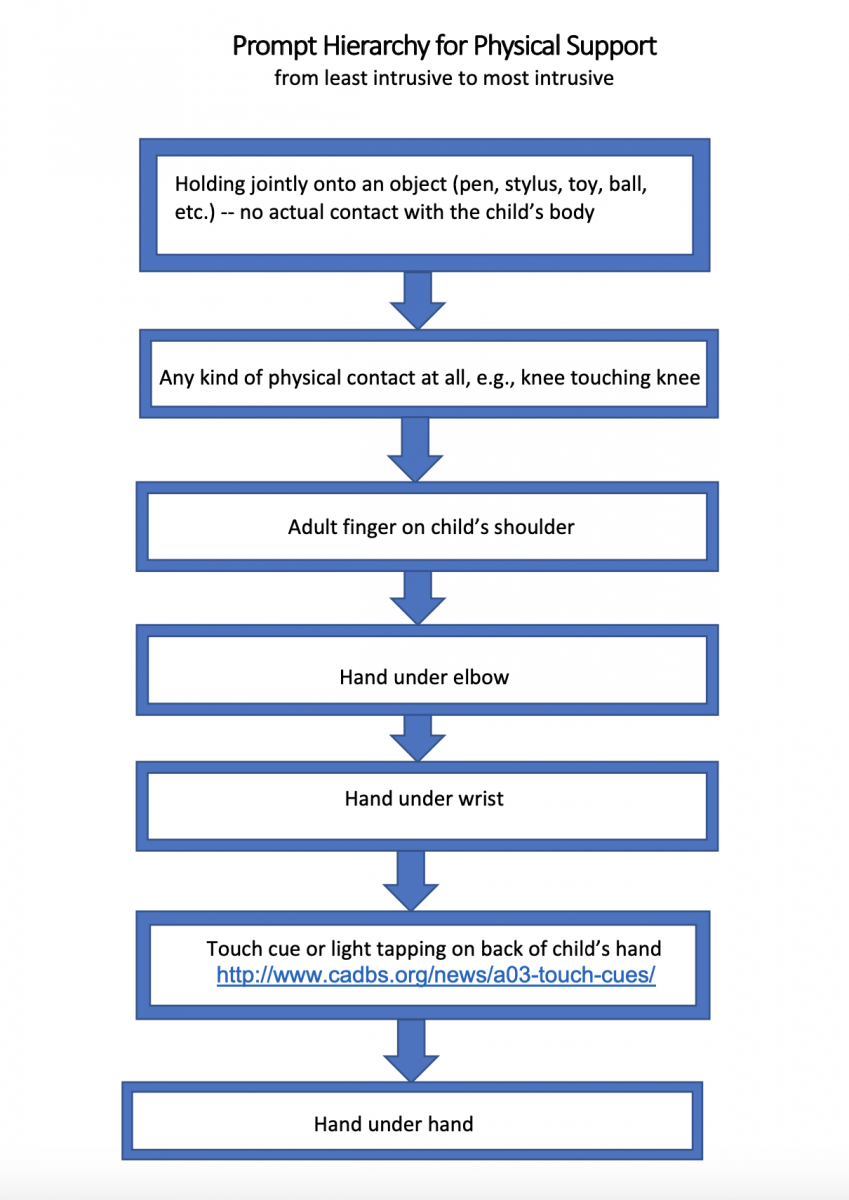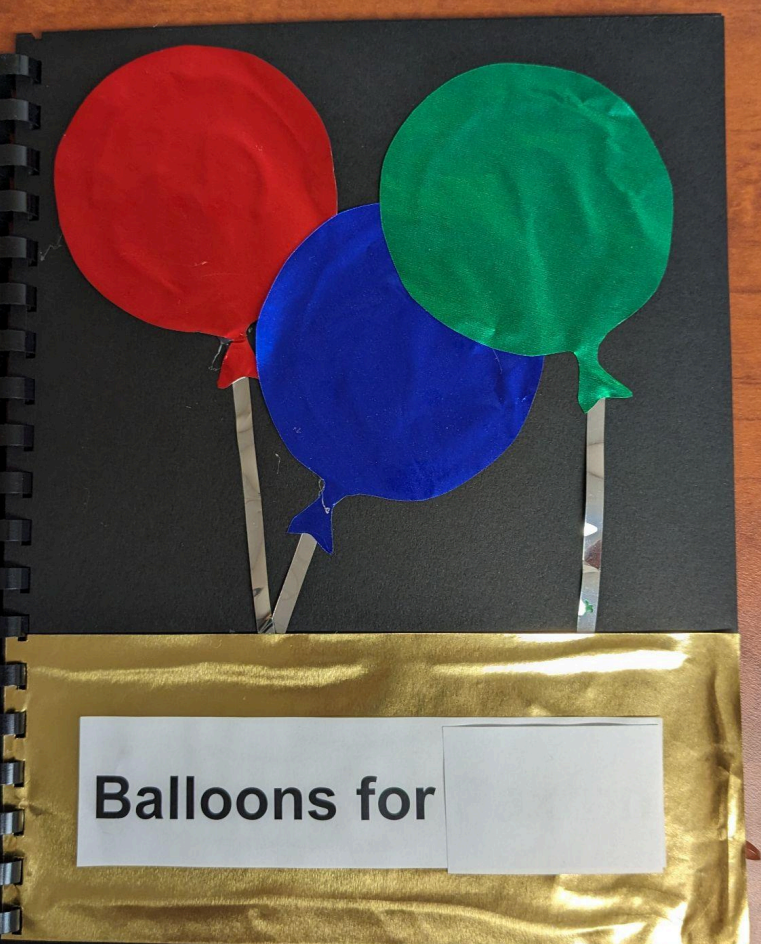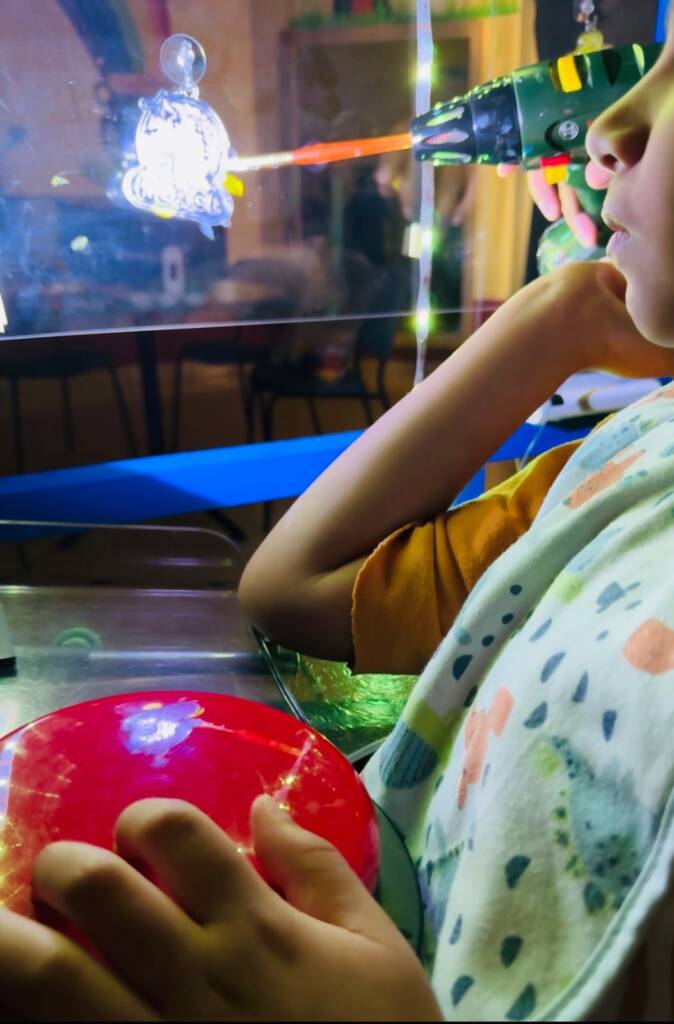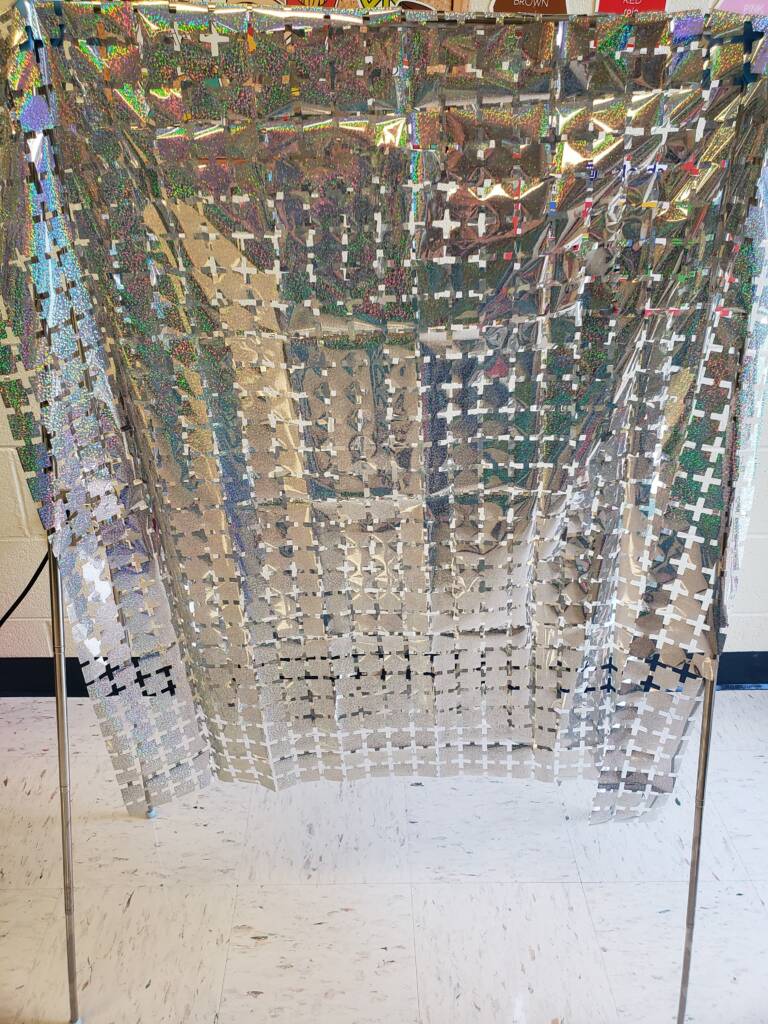Visually-guided reach (VGR) is a skill that we typically assess and often try to promote in our students, but what about students who have limited motor control and may not be able to extend their arms or control their reach at all? Many students with cerebral palsy and other motor challenges may not be able to achieve this skill for motoric, rather than visual, reasons. While the focus in this article is on students with CVI, some of the information applies to other students with complex learning needs and/or deafblindness.
What is visually-guided reach?
Visually-guided reach refers to the ability to simultaneously look and reach, or to simultaneously tactilely interact with, a target/object. Difficulty with Visually Guided Reach is one of the 10 characteristic visual behaviors associated with individuals who have cortical visual impairment (CVI) and assessed using the CVI Range (Roman-Lantzy, 2007; Rev., 2018). Individuals with CVI may exhibit difficulty with simultaneous looking and touching/reaching, which is typically manifest as:
- Look (to regard or locate an object/target), then look away, then reach (while still looking away)
- Look, reach, then look away once in tactile contact with a target/object
- Feel/explore tactilely to find an object/target, then look once in tactile contact with it
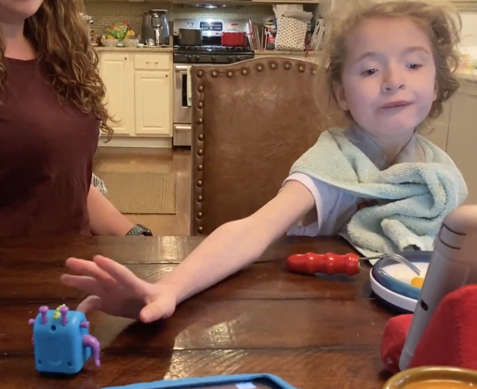
Why is it important?
Visually-guided reach is a critical skill for everyday functional activities, such as reaching for a spoon or cup, or, for those who are presymbolic, for pointing to or tactilely indicating/engaging with objects and concrete symbols to communicate. Children who are unable to reach towards a visual target for motoric reasons may have increased difficulty expressing choices or making their wishes known.
What are some general considerations for supporting VGR for a child with CVI?
A child with CVI should be allowed to look away while reaching for or tactilely interacting with a target/object. One should never physically manipulate or force a child to look, and even verbal prompting to “look at this” should be avoided. Instead, adaptations based on CVI Range assessment (Roman-Lantzy, 2007; Rev. 2018) should be used to promote increased visually guided reach. While individualized for each child based on assessment results, some examples of adaptations that may support a child to achieve increased visually guided reach include:
- Reduced visual complexity of the array of objects and background in front of the child
- Use of bright, saturated colors or single-color objects to promote visual attention
- Use of light to illuminate a visual target
- Use of movement to elicit or sustain visual attention (move an object, move a flashlight shining on an object, or use reflective/shiny materials)
What are the challenges for a child with limited motor skills?
Many children with CVI have additional associated conditions affecting voluntary motor functioning, such as cerebral palsy. Significant motoric challenges may include severe contractures, absence of limbs, ataxic movements, proprioceptive deficits impacting body awareness, and limited or no volitional movement in one or more parts of the body. In the absence of another effective form of augmentative and alternative communication (AAC), students who have limited or no volitional movement may communicate primarily through pre-intentional behaviors or reflexes, such as heart rate/pulse, respiration/breath, or flushness of skin tone. For children with CVI who have significant motoric challenges, reaching and grasping skills are compromised, and therefore the characteristic Difficulty with Visually Guided Reach must be considered in an alternative lens.
It is also important to consider that children who have complex physical, sensory, developmental and health challenges can have difficulty regulating their own biophysical states and levels of alertness, which can have a significant impact on their “availability for learning.” For more information on supporting availability for learning in children with complex care needs and limited volitional movement, see “Supporting Availability for Learning: Student-Centered Bio behavioral Assessment and Intervention for Children and Youth with Deafblindness/Multiple Disabilities” (Russell, 2020).
Collaborate with the Transdisciplinary Team
Start by consulting with the child’s Occupational Therapist (OT) and Physical Therapist (PT) to learn what kind of volitional movement the child may have, if any. Is the child able to extend arms after stretching or initial warm ups? Will the child benefit from proprioceptive input, such as joint compressions, to support biophysical equilibrium, increased availability for learning, and/or increased ability to perform volitional motor movements? Sensory integration strategies may be helpful to some children, and OTs and PTs may be able to provide specific recommendations. Additionally, OTs and PTs may recommend adaptive equipment to support best positioning for tasks requiring motor access and reach.
Assessing VGR in children with motoric challenges
Children who have motoric challenges to the extent that they cannot independently or efficiently reach should still receive a score for the characteristic of Difficulty with Visually Guided Reach on the CVI Range. While some may prefer to not assess the characteristic at all for a child without visually guided reach (therefore scoring only 9 out of 10 characteristics), so as not to penalize them when scoring the CVI Range, it is important to consider creative ways that the child can in fact be assessed accurately, and without bias. Because the simultaneous use of vision and tactile sensory input does in fact fall within the experience of multi-sensory complexity, the scoring for this characteristic may be similar or the exact same as Difficulty with Multi-Sensory Complexity (on CVI Range, Rating 2). For example, can the child with CVI and motor challenges simultaneously use vision while in physical contact with a person or object, regardless of the ability to perform a traditional “reach.” This may include hand-under-hand support, touch cues, or other tactile interactions discussed below.
Hand-under-hand to support access and exploration
Hand-under-hand is a commonly used technique for many educators and families, whereby the adult’s hand is under the child’s hand and the child “rides” or follows the adult’s hand to touch or mutually explore an object or environment, or to complete a task. In hand-under-hand, as opposed to hand-over-hand*, the child has more control and is free to remove his or her hand; thus hand-under-hand supports independence, interdependence, and self-determination. Read more about hand-under-hand technique in Barbara Miles’ seminal article, Talking the Language of the Hands to the Hands (2003).
Some children may not be comfortable with hand-under-hand initially, and they may find a touch anywhere near the hands to be too intrusive or distracting. If a child is not yet “ready” for hand-under-hand, it may be helpful to begin by providing support at the wrist, the elbow, the shoulder, or the leg.
*Note that hand-OVER-hand should only be used for coactive manipulation (showing a child how to do a specific fine motor task, such as producing a sign). In this case, the child needs to be able to communicate, “Yes, you can take my hand and show me how to do this.”
Prompt hierarchy for physical support
Hand under hand is typically discussed as the least intrusive prompt, and is a responsive interaction practice for students with visual impairments and deafblindness. However, there are even less intrusive physical supports (shown in this chart) which may be considered for students for whom hand under hand is still too uncomfortable or overstimulating.
When considering the above prompt hierarchy for physical supports, these guiding questions may be helpful:
- Can the child look simultaneously while receiving any of these tactile supports?
- Can the child look with or without specific additional CVI adaptations to support visual attention (the use of movement, light, bright/saturated colors, placement of targets in preferred visual fields, reduced complexity, relative familiarity or novelty of targets, or when provided with additional processing time to support latency)?
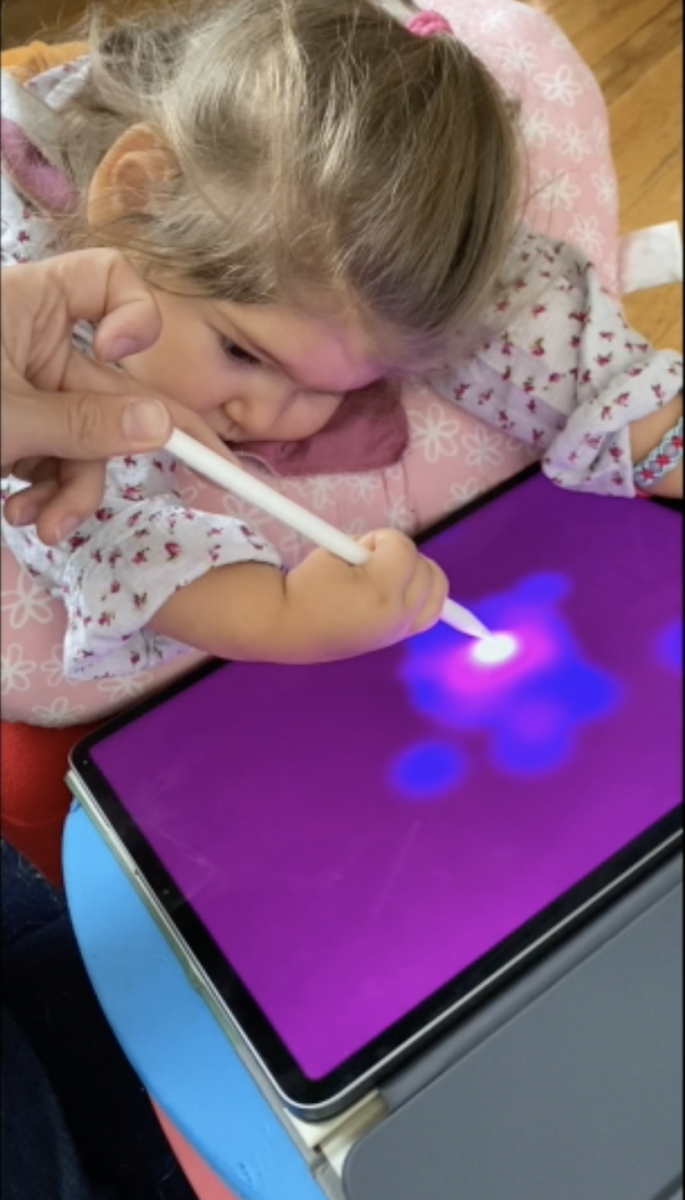
How does hand-under-hand support impact CVI?
For a child with CVI, the tactile experience of hand-under-hand support may actually cause increased multisensory complexity, which could make it difficult for some children to focus simultaneously on visual targets.
Consider that Difficulty with Visually Guided Reach is related to Difficulty with Multi-Sensory Complexity–the experience of simultaneous tactile and visual input. In other words, consider: Is the child able to look and interact with tactile stimulus of any kind, at the same time? This could be hand-under-hand guidance, direct tactile interaction or proximity with a person or object. Even though the child cannot look and reach motorically, can he/she look while in physical contact with a person or object?
Video of Child with Minimal Physical Support
In the video below, a TSVI is using the Cause and Effect Sensory Lightbox app on an iPad*. The TSVI for this student reports that if he uses a light tactile support under the child’s wrist, this would add to multi-sensory complexity and make it more difficult for her to look. Notice how instead, he holds onto the stylus (Apple Pencil) to provide an even less intrusive tactile support to the child, without providing additional stimulation that may interfere with her ability to look. Additionally, there is no additional or unnecessary prompting, and the child is given adequate processing time and allowed to look away and look back as needed.
*With an app such as this, it is recommended that the volume of the app be turned down or off, so that the auditory input does not compete with the child’s visual engagement. Note that there is no sound in this video. (Video courtesy of Jonathan Hooper, MS. Ed., TVI)
